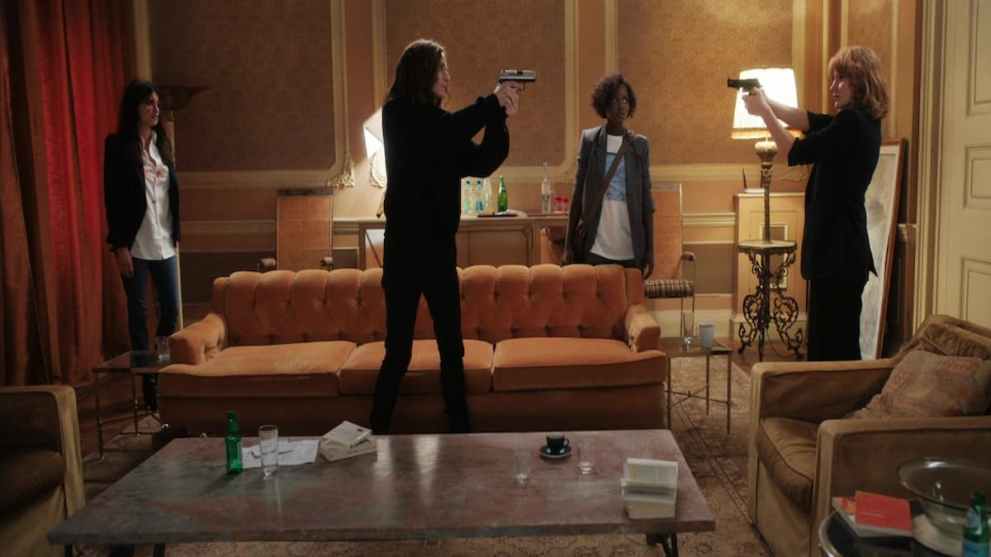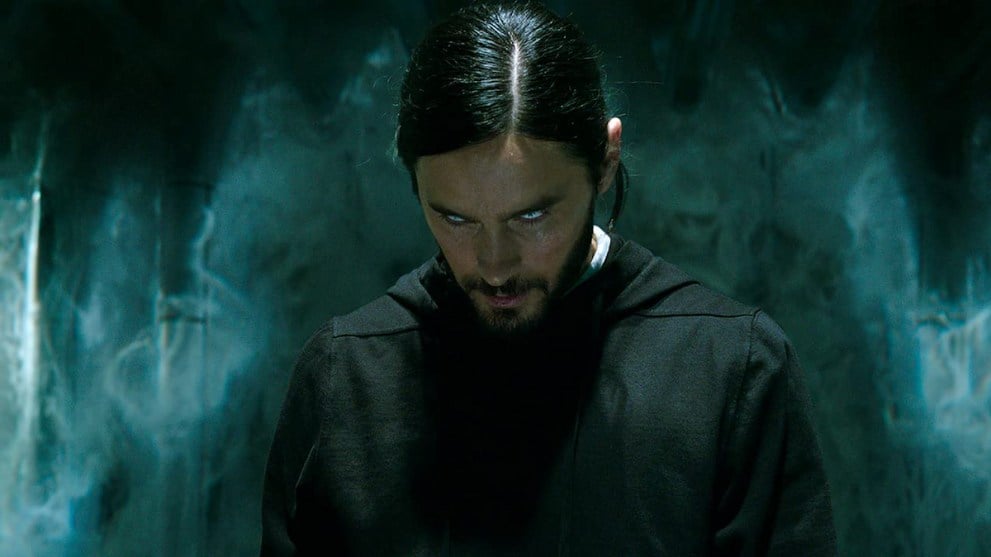The box office largely recovered from the impact of COVID-19, barring a few hiccups earlier in the year. This hasn’t meant that every film has been a success, though, as 2022 has proven that cinemagoers are still selective about what they would like to watch. Some films have seen box office grosses far less than their budgets were worth, while certain others still failed because Print & Advertising (P&A) costs are sizable on their own and prevent movies from breaking even.
The overall cost of a movie can be difficult to estimate, but the standard rule of thumb to break even is considered to be 2.5 times the budget. These have been applied to the movies whose loss figure wasn’t revealed, but a few others’ general figures are known and have been noted accordingly. It’s also worth looking into the factors that caused these movies to bomb so that we can assess whether it was due to budget or because of things like negative audience perception.
Bros
(Budget: $22 Million/Box Office: $14.8 Million)

Bros is a romantic comedy about a gay couple in which both men have severe commitment issues. Their hilarious attempts to make things work make up the overall story. While the movie received solid reviews, it was a flop at the box office with a $14.8 million gross, not even making up for its relatively low $22 million budget. Considering it should have ideally made $55 million to have a shot at being profitable, Bros was a definite failure.
Factors for its low performance can be attributed to how the marketing went hard into its LGBTQ premise – with star Billy Eichner openly promoting it as such – thus reducing its reach to other demographics. It also didn’t help that Eichner started blaming audiences for not showing up, which would have turned off those who planned on seeing it later. Such a niche movie would have benefitted from an even smaller budget to have a greater chance at turning in a profit or marketed itself differently to entice viewers of all types.
Cyrano
(Budget: $30 Million/Box Office: $6.4 Million)

Cyrano is a tragedy romance based on the 1897 Edmond Rostand play Cyrano de Bergerac, starring Peter Dinklage in the title role. The story is about his character’s love for a woman he’s too shy to woo, and he ends up aiding a friend to do the same using his own words. Cyrano turned out to be a big flop, as the film only made $6.4 million from a reported $30 million budget.
The movie was well-received critically, with Dinklage gaining a Golden Globe nomination for Best Actor. But Cyrano failed to attract any significant audience, likely due to the dated nature of the story. Tragedies aren’t the most mainstream genre pieces, and a budget that Cyrano had was always going to be difficult to recoup. With about $75 million needed to be profitable, Cyrano was a massive disappointment. The film would perhaps have been better off as a streaming release since cinemagoers these days aren’t likely to be motivated to visit the cinema for this sort of tale.
Blacklight
(Budget: $43 Million/Box Office: $16 Million)

Blacklight is an action thriller with Liam Neeson in the lead role, with the story about a former war veteran who discovers an evil plot by the FBI and decides to thwart them. Of course, the plot is secondary to Neeson’s appearance, as the main appeal of watching Blacklight is for his fans to enjoy another action film featuring the beloved actor.
However, even the draw of Neeson couldn’t prevent Blacklight from proving to be a complete flop, grossing only $16 million on a $43 million budget and with no hope of reaching over $100 million to be profitable. The primary factor for its woeful showing might indeed be related to the aforementioned star power of Neeson, who is far beyond the glory days of Taken. After all, the actor has saturated the market with one action thriller after another.
Blacklight was also hampered by the fact that Blacklight received a critical lashing, only garnering a 10% Rotten Tomatoes score. Audiences have made it clear that they won’t just turn up for any film based solely on an actor’s name, with Blacklight suffering as a result.
Turning Red
(Budget: $175 Million/Box Office: $20.1 Million)

Disney and Pixar’s Turning Red is about an adolescent girl who has a family curse of turning into a red panda. The issues she has with her mother over culture clash are the primary outline of the film. Turning Red’s case is a bit different because it was released on Disney+ in its local market and released selectively worldwide.
The film had a $175 million budget and grossed $20.1 million overall, excluding streaming viewership. Nevertheless, The Numbers reported that Turning Red made a huge loss of $167 million, making it an absolute disaster in terms of revenue. Disney’s decision to keep its release restricted ended up costing the film a solid return, which needed about $440 million just to break even. Turning Red is geared more toward a female audience, so the male demographic likely wasn’t too interested in checking it out.
The 355
(Budget: $40-75 Million/Box Office: $27.8 Million)

The 355 is a spy thriller about a group of female agents who learn about a terrorist plot to begin WWIII and leap into action to stop it from happening. The film packs in the usual action typical of the genre, which ended up inflating its budget between $40-75 million, and it was too great for the box office to match up.
The 355 only grossed $27.8 million, for a general breakeven range of $100-187 million. Suffice it to say, the film was an epic failure for the studio, and it was always going to be difficult considering it was released at a time when Spider-Man: No Way Home was still ruling the box office. The movie also reduced its chances of gaining more revenue because of its 45-day theatrical timeframe before it went to streaming services. The bad critical reception also contributed to the public’s lack of interest in this feature.
Moonfall
(Budget: $138-146 Million/Box Office: $67.3 Million)

Moonfall is a sci-fi film about the Earth’s moon moving out of orbit and the protagonists’ struggle to preserve humanity from the disastrous fallout. With a big budget stretching to $146 million, Moonfall had to make at least around $365 million but made only a fraction to gross $67.3 million by the end of its run. The Numbers reported the film to lose at least $138 million overall, becoming one of the biggest bombs ever.
The movie’s failure can be attributed to bad luck, as it was released during the North American winter storm season which caused many cinemas to shut down, while markets such as China were experiencing a new wave of COVID-19 cases. But it also comes down to the lack of a bona fide A-lister in the lead role, as films in the space genre typically need a big star to perform well. Halle Berry and Patrick Wilson aren’t of the same ilk as, say, Matthew McConaughey and Matt Damon, both of whom headlined similar blockbuster movies Interstellar and The Martian.
Amsterdam
(Budget: $80 Million/Box Office: $31.2 Million)

Amsterdam is a period comedy thriller about three characters who witness a murder and end up embroiled in a plot to discover the true nature behind the event. Amsterdam had an $80 million budget but only made back $31.2 million despite stars such as Christian Bale, Margot Robbie, and John David Washington at the forefront, going on to become a certified disaster at the box office.
The confusing plotline, terrible reviews, and bloated runtime of over two hours are attributed as the main reasons for its failure. Audiences seemingly just weren’t sure what to make of this film that treads the line between comedy and thriller. Deadline reported that Amsterdam carried a $70 million P&A budget, meaning it lost around $100 million at the end of its theatrical run. Films such as this should ideally have a lower cost because audiences can’t be expected to turn out for a “whodunit” plot whose marketing was unclear over what it was all about.
Lightyear
(Budget: $200 Million/Box Office: $226 Million)

Lightyear is a spin-off to the Toy Story series, revealing the film based on which the Buzz Lightyear toy was made. While its $226 million gross made more than the $200 budget, Lightyear was a box office bomb because of the large P&A costs attached, with The Numbers reporting a loss of over $123 million for the animated feature.
Lightyear’s failure can be attributed to the lackluster connections it has with the Toy Story series, as Chris Evans’ overtly serious Buzz acts nothing like Tim Allen’s funloving version that fans have come to love. The film was banned in over a dozen countries due to the presence of an LGBTQ character’s kissing scene, which also contributed to fewer returns as Disney decided not to censor that particular content. Lightyear might have performed better had it been presented as a fun adventure rather than a grim space flick, as fellow animated spin-off Minions: The Rise of Gru turned out to be a huge hit with its slapstick nature.
Morbius
(Budget: $75-83 Million/Box Office: $167.5 Million)

Morbius is set in Sony’s Spider-Man Universe, depicting the titular character’s turn into a vampire after coming up with a cure for a blood disease. Morbius’ budget of $75-83 million was smaller compared to other superhero movies, but it still needed to gross at least above $200 million – it could only reach $167.5 million by the end of its run.
Morbius is remembered more for the many memes it has spawned than anything else, with several variations of “It’s Morbin’ Time” across the internet. That didn’t help its case in terms of profits, though, as the film still lost millions due to the poor critical reception, lackluster special effects, and bad screenplay which was more interested in setting up sequels than completing this particular story.
Strange World
(Budget: $135-180 Million/Box Office: $54.1 Million)

Strange World is an adventure film about a family who embarks on a trip to a mysterious land and works on their own issues along the way. The film has been a flop of epic proportions, with the film’s $54 million gross looking paltry next to the $135-180 million budget. Deadline reported that Strange World has lost Disney an estimated $147 million, making it a catastrophic result for the studio.
The film’s impending bans due to an LGBTQ plotline was anticipated by Disney, who decided not to release Strange World in more than 20 countries – this instantly cut away any possibility to earn from a significant portion of markets worldwide. The film’s marketing also focused a lot more on the diverse nature of the characters over the story, and those who did watch it weren’t too impressed with the actual plot. It received a “B” audience score from cinemagoers, which is the worst for the studio. While Disney can be commended for sticking to its guns, the many bans and mediocre fan reception are certainly becoming glaring issues it will have to figure out a way to overcome.
